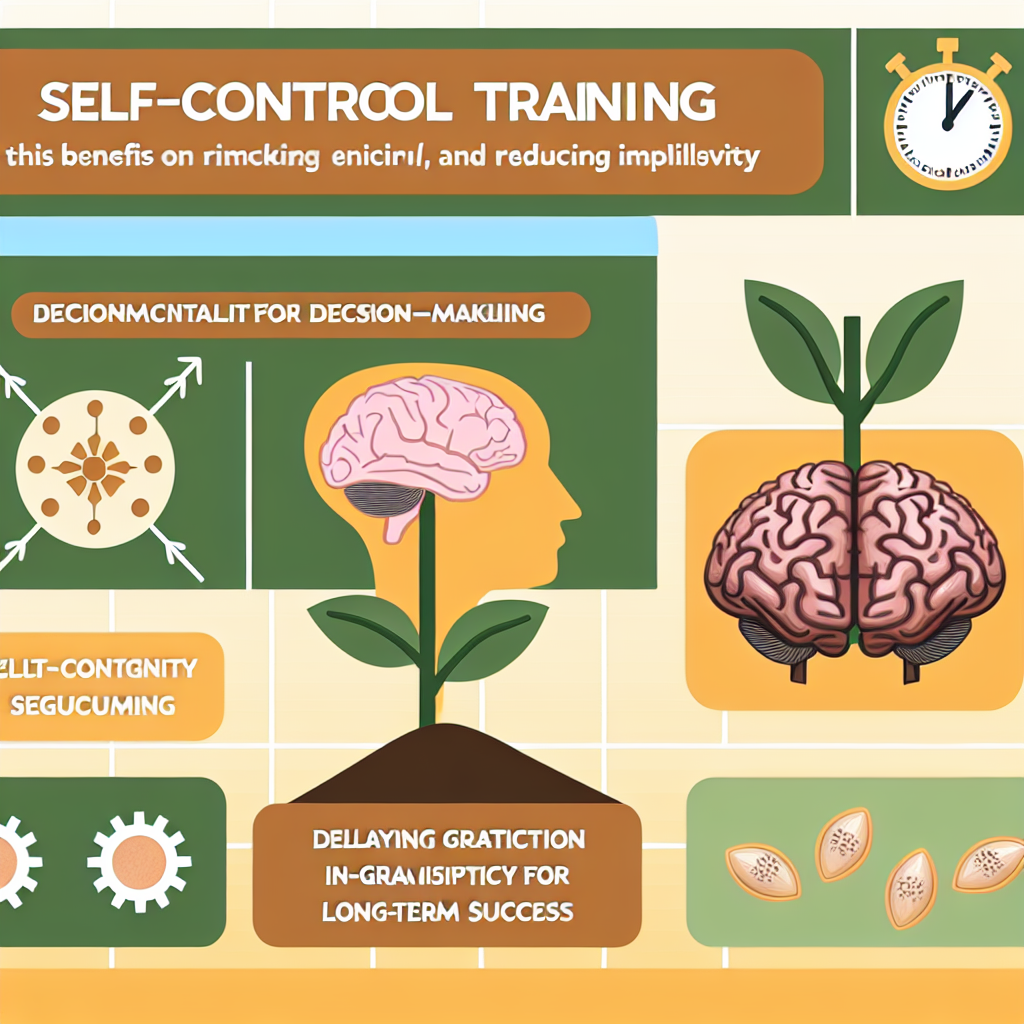Self-Control Training: A Scoping Review
Self-control plays a vital role in daily life, influencing everything from academic performance to mental well-being. For behavior analysts, understanding the latest research on Self-Control Training (SCT) can help improve interventions for individuals struggling with impulsivity. A recent scoping review by Finch, Chalmé, Kestner, and Sarno (2023) provides valuable insights into SCT methods, their effectiveness, and practical applications.
This blog post summarizes key findings from the review and explores how SCT can help individuals make better long-term decisions.
What Is Self-Control Training?
Self-control refers to the ability to delay immediate gratification in favor of long-term rewards. In contrast, impulsive choice occurs when individuals opt for smaller, immediate rewards over larger, delayed rewards. This concept is closely linked to delay discounting, where the value of a reward decreases as the delay to receiving it increases.
Why Is SCT Important?
SCT techniques aim to teach individuals how to tolerate delays and make more beneficial choices. A lack of self-control has been associated with:
- Substance use disorders
- Gambling and unhealthy spending habits
- Poor dietary choices and health outcomes
- Attention-deficit/hyperactivity disorder (ADHD)
- Intellectual and developmental disabilities
Behavior analysts can use SCT to help individuals with these challenges develop healthier decision-making patterns.
How Was the Scoping Review Conducted?
The scoping review followed a systematic approach to identify and analyze SCT research published between 1988 and 2021.
Search Methods
-
Databases Searched: Six major research databases
-
Inclusion Criteria:
- Empirical, behavior-analytic studies
- Human participants
- Interventions designed to increase self-control
- Measurable outcomes related to impulsivity
-
Screening Process:
- Abstract review by multiple researchers
- Interrater agreement used to resolve discrepancies
By applying these criteria, the authors identified patterns in the research and provided a comprehensive summary of common SCT methods.
What Did the Review Find?
Study Characteristics
The studies included in the review spanned 33 years and covered a diverse range of participants.
-
Age Range: 3 to 50 years old
-
Participant Diagnoses:
- Autism Spectrum Disorder (ASD)
- ADHD
- Intellectual Disabilities (ID)
- Traumatic Brain Injury (TBI)
-
Settings:
- Home
- Schools
- Clinics
Most studies used experimental designs to assess SCT methods and their effectiveness in real-world settings.
How Is Self-Control Trained?
SCT procedures vary, but the research highlighted several effective methods.
1. Common Training Techniques
- Progressive Delay: Gradually increasing the wait time before receiving a reward.
- Intervening Activities: Providing alternative tasks to make waiting easier.
- Signaled Delays: Using cues to indicate when a delayed reward is coming.
- Antecedent Rules: Teaching verbal or written rules to guide behavior.
- Commitment Responses: Having individuals make choices in advance to reduce impulsivity.
Each technique helps individuals develop tolerance for delays and improve their decision-making.
2. Measuring SCT Outcomes
Behavior analysts assess self-control using different dependent variables, including:
- Choice Allocation: How often a person selects long-term rewards.
- Delay Tolerance: The longest amount of time an individual is willing to wait for a larger reward.
- Task Engagement: How well an individual stays focused while waiting.
- Reduction in Challenging Behavior: Decreases in impulsive or disruptive responses.
Improvements in these areas indicate success in SCT interventions.
3. SCT Variations
SCT can be customized using different reinforcement methods:
- Reinforcer Type: Adjusting the magnitude, duration, quality, or rate of rewards.
- Positive vs. Negative Reinforcement: Using preferred items (e.g., toys, food) or removing aversive stimuli (e.g., loud noises).
- Intervention Packages: Combining multiple strategies, such as Progressive Delay + Intervening Activities, to enhance effectiveness.
By testing different SCT strategies, researchers have identified ways to tailor interventions for different individuals and settings.
What Does This Mean for Behavior Analysts?
The findings from Finch et al. (2023) offer several helpful takeaways for practitioners looking to incorporate SCT techniques:
- SCT is most effective when it combines multiple reinforcement strategies. A mix of progressive delay, intervening activities, and commitment responses can produce better outcomes.
- Teaching self-control has broad applications. SCT can benefit individuals with ADHD, ASD, and substance use disorders, making it a valuable tool for clinicians.
- More research is needed in real-world settings. While laboratory studies offer useful insights, future research should focus on long-term SCT outcomes in applied environments like schools and workplaces.
Final Thoughts
Self-control is a critical skill that affects nearly every aspect of life. By implementing evidence-based SCT techniques, behavior analysts can help individuals improve their decision-making, reduce impulsivity, and achieve better long-term outcomes. This scoping review provides a valuable framework for understanding SCT’s effectiveness and encourages further research in the field.
For a deeper dive into the complete review, read the full study by Finch, Chalmé, Kestner, and Sarno (2023) at https://doi.org/10.1007/s40617-023-00885-y.



